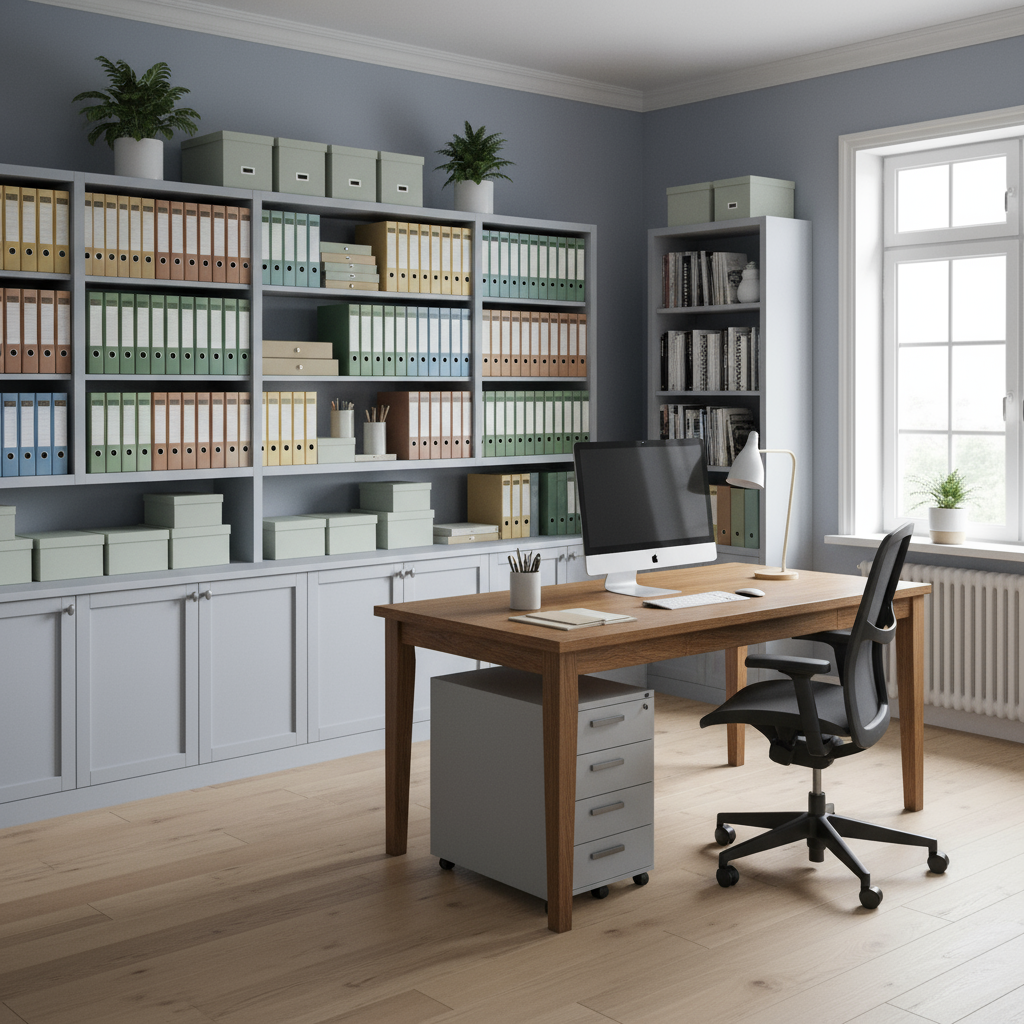Working from home has become a part of modern life for millions of people. Whether you’re a freelancer, entrepreneur, or remote employee, having a dedicated home office is essential. But creating an effective workspace isn’t just about setting up a computer on a table—it’s about designing an environment that enhances productivity and comfort. Smart storage solutions play a key role in achieving that balance. Here’s how to design your home office with organization and efficiency in mind.
1. Start with the Right Location
Choosing the right space is the foundation of your home office. Look for an area that offers natural light, minimal distractions, and enough room for your essentials. A quiet corner of your bedroom, a spare room, or even a section of your living area can work. Once you’ve picked your spot, think about how much storage you’ll need for files, supplies, and equipment.
If space is limited, vertical solutions such as wall-mounted shelves or pegboards can save floor space while keeping items accessible.
2. Invest in Multi-Functional Furniture
The key to a productive workspace is versatility. Select furniture that can be used for multiple purposes. A desk with built-in drawers or side shelving can hold office supplies, paperwork, and devices. Ottomans or benches with hidden storage can double as seating and storage areas for documents or electronics.
Adjustable desks are another smart option—they allow you to alternate between sitting and standing, improving posture and comfort while keeping your workspace flexible.
3. Use Vertical Space Effectively
When it comes to home office storage, think upward. Wall-mounted shelves, corkboards, and floating cabinets can help you store essentials without cluttering your desk. Pegboards are ideal for hanging tools, cords, and stationery, while decorative wall baskets or magazine racks add both function and style.
Using tall bookcases or stacking organizers helps you keep everything in order while freeing up floor space for mobility.
4. Keep It Minimal and Clutter-Free
A cluttered workspace can quickly drain focus and motivation. Limit what’s on your desk to daily essentials—like your laptop, notepad, and a few pens. Store everything else in drawers, cabinets, or bins.
Label your storage containers so you can find items quickly, and schedule weekly clean-ups to prevent buildup. Remember, a tidy space equals a clear mind.
5. Incorporate Smart Storage Solutions
Consider creative ways to keep your workspace organized:
-
Cable management tools to keep cords from tangling.
-
Drawer organizers for stationery and small tools.
-
File cabinets for important documents.
-
Rolling carts for supplies that can move with you.
For smaller spaces, floating desks and fold-away tables can be game changers.
6. Personalize Your Space
A home office should reflect your personality and motivate you. Add plants for a touch of greenery, use warm lighting for comfort, and include decor that inspires creativity—like art prints, family photos, or motivational quotes.
However, balance is important. Avoid overdecorating, which can lead to visual clutter. A few thoughtful touches go a long way toward creating an inviting yet productive environment.
7. Optimize Lighting and Ergonomics
Good lighting enhances focus and reduces eye strain. If at all possible, place your desk close to a window to take advantage of natural light. Use a desk lamp with adjustable brightness for late-night tasks.
Ergonomic furniture—like a supportive chair and monitor stand—can make long work sessions more comfortable. Proper posture reduces fatigue and improves focus, making your workspace truly efficient.
8. Go Digital and Reduce Paper
In home offices, paper clutter is a common problem. Minimize it by switching to digital files whenever possible. Use cloud storage services like Google Drive or Dropbox for document management and invest in a reliable scanner to digitize existing paperwork.
Less paper means less mess and easier access to your files when you need them.
Conclusion
Designing the perfect home office is about creating a space where function meets comfort. By choosing the right location, integrating smart storage, and maintaining an organized layout, you can boost productivity and mental clarity. A well-thought-out workspace encourages focus, creativity, and balance—allowing you to make the most of your work-from-home lifestyle.
Your home office doesn’t have to be large or expensive to be effective. With the right storage solutions and thoughtful design, any corner can become a place of inspiration and efficiency.



